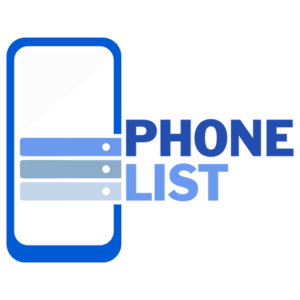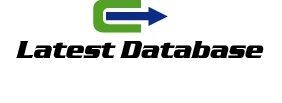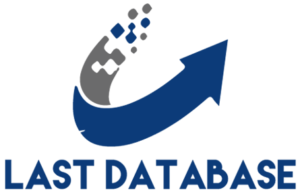Do you know how to increase your conversions and connect with your potential customers faster? Yes, pop-ups allow you to do just that.
Read on to discover the types of pop-ups that work best and how you can use them to capture user attention at the right time, drive more purchases from your store, and drive more subscribers to your marketing channels—all automatically.
Switch to Brevo’s multi-channel automation
Reach your potential customers at the right time with personalized messages on your website or via email, SMS, or WhatsApp.
Table of Contents
- What is a pop-up?
- Types of pop-ups that work best
- Pop-up examples
- 7. Disfruta & Verdura reminds you that you are leaving without buying anything
What is a pop-up?
A pop-up window is a digital marketing tool used on websites and e-commerce that displays content to capture the user’s attention .
These pop-up ads can include questions or a call to action (CTA) to promote content or special offers, engage subscribers, or facilitate the shopping experience.
Used well, they improve the user experience and, in turn, your conversion rates .
Pop-ups help you create highly targeted conversion experiences on your website. You can have them appear only to specific visitors using triggers. For example, when they enter the page, when they leave, after a certain amount of time has passed, when they click, or when they’ve viewed a certain percentage of your page.
—Oli Gardner, co-founder of Unbounce
What is a pop-up for?
According to Optimonk , the best pop-ups achieve conversion rates of 42.35% . Not only that, but they help you improve communication with visitors and gather valuable data that you can use in your marketing strategies to build customer loyalty.
There’s a reason they’re such a popular marketing tool. Yes, you’ll see brands like Nike, Shein, Spotify, and Samsung using them, but more and more SMEs and entrepreneurs are using them, especially in e-commerce .
Here’s how some brands use them:
| USE | DESCRIPTION | EXAMPLE |
| Lead capture | They collect information in exchange for a free resource. | HubSpot embeds them in relevant blog posts to ask for email addresses in exchange for ebooks. |
| Promotion of offers | They highlight discounts, sales or special promotions. | Clothing stores like Shein offer discounts for first-time purchasers. |
| Notifications | They report updates, policy changes, or relevant news. | Changes to the terms of service of an app like PayPal . |
| Confirmation of age | They verify the minimum age required to access the content. | Widely used in alcoholic beverage stores ( Heineken ). |
| Surveys and feedback | They ask the user for feedback on their experience. | ContentFly asks the user to rate the article they just read and leaves space for comments. |
| Social proof | It appears every time a purchase is made on the website. | It is especially used in Black Friday campaigns and special promotions to encourage purchases ( OptinMonster ). |
The good thing is that to use them, you only need WordPress plugins or add-ons for Shopify and PrestaShop. Plus, they’re compatible with Google Analytics and many marketing platforms like Brevo , which easily integrate with the best pop-up services or integrate them natively.
Types of pop-ups that work best
1. Modal pop-up (middle window)
Also called a “lightbox,” it is a box that appears in the center of the screen and obscures the main content of the page.
Uses: Forms, important promotions or notifications.
Example: An organic food store displays a modal pop-up after 10 seconds. The pop-up form invites the user to subscribe to its email list: “Subscribe to our green newsletter and get 20% off your first purchase.”
Offering a discount in exchange for a subscription achieves conversions of 7.65% .
2. Full screen pop-up
An interstitial ad that fills the entire screen and blocks access to the content. While it may seem intrusive, if the message is relevant or important, there’s no better way to capture your target audience’s attention and increase your conversions by 14.40% .
Uses: Legal notices, announcements to highlight a new product or event, a flash sale, or premium content.
Example: A brick-and-mortar delicatessen in Gijón will set up a pop-up store for three days in a shopping center in Madrid. To advertise the event, it displays a full-screen ad on its website to visitors from nearby areas.
3. Pop-up sliding or “slide-in”
An ad that scrolls from the side or bottom of the page, but does not block the main content.
Uses: Help chat, recommendations, or subscription boxes in exchange for lead magnets relevant to the page content.
Example: An English school displays a sliding pop-up after 30 seconds on a blog post: “Want to try our English method? Join our students and receive a free class.”
4. Fixed bar floating pop-up
This pop-up remains discreetly visible at the top or bottom of the screen while the user navigates.
Uses: Legal notices, cookies, news or temporary promotions.
Example: A gym uses a floating bar to invite users to sign up for any of its classes at a reduced price for the first month. The offer expires in a week, and a timer indicates the time remaining.
5. Interactive or multimedia pop-up
This type of pop-up includes questions or gamification elements in the form of videos, images, or animations and is perfect for capturing attention and improving the user experience.
Uses: Demonstrations, interactive catalogs, promotional videos or surveys.
Example: A pizzeria creates an interactive pop-up where site visitors “spin a wheel” to win discounts on their next order in exchange for an email address. These types of pop-ups generate average conversion rates of 13.23% .
6. Customer support pop-up
This floating box remains visible in a corner or side of the screen, usually in the lower right corner, while the user navigates the site.
Uses: Welcome messages, surveys, quick notifications, lead generation, or customer support chat.
Example: A consulting service offers immediate assistance via a chatbot on its homepage: “Any questions? I’m here to help.” This is ideal for guiding the purchase and providing a better customer experience.
7. Exit-intent pop-up
This pop-up is triggered when the user is about to leave a page. One of its main advantages is that it captures the user’s attention and provides an incentive to stay on the site.
Uses: Special offers, abandoned cart recovery.
Examples: An organic food store displays a new window with a 10% discount code when it detects a user abandoning their cart without completing the purchase. This technique has already generated 37% more purchases for other stores.
Pop-up examples
1. Toyota turns heads at the right time
Toyota displays this modal pop-up in the used rental section of its website. The goal is to showcase its offering in a highly visual way and invite visitors to read more information.
Why it works: The brand segments by interest and clearly improves the potential customer experience without interrupting the browsing experience of other visitors.
How to use it for your business:
- Personalize the offer by showing clear and compelling benefits that encourage action. In Toyota’s case, they make the price
- Include high-quality images to encourage clicks.
- Avoid showing it repeatedly to the same user.
2. Doña Felisa Winery: as soon as you enter, it warns you
Forget the couplet for a moment and consider how complying with the law can also strengthen your brand experience and improve your credibility, as the winery does.
Why it works: Use a clean, clear design to make it easy to select the response and minimize disruption. Now, if you’re going to use these pop-ups in your promotions, keep the following tips in mind.
How to use it for your business:
- Offer tons of value, and use it strategically, because this pop-up is quite intrusive. Which can be a great thing… but it can also be quite the opposite.
- Make sure the close button is clearly visible, even on mobile devices.
- Don’t show it on the first page that search engine visitors see if you don’t want Google to mess up your SEO.
3. Shein “slides” on your screen with special offers
It’s clear that Shein doesn’t want you to leave without buying, so it’s showing you this sliding pop-up on the side of the screen with a special discount and VIP access to its offers.
Why it works: The pop-up moves with you, but only shows you the black border with the 15% off ad so as not to interrupt your experience. It only shows you the content when you open it.
When you know that the first purchase is the hardest to achieve, eliminating friction is worth it.
How to use it for your business:
- Use a single field to make it faster and easier to complete.
- Show the pop-up after the user has interacted with the site and let them familiarize themselves first. Pop-ups triggered after a few seconds of interaction generate more conversions.
- Don’t miss out on potential customers and capture subscribers. That way, if they leave without purchasing, you can create mass email campaigns to build loyalty and encourage them to buy from you again later.
(300 emails/day, unlimited contacts)
4. Leroy Merlin gives you a treat… without being intrusive
Leroy Merlin knows you’ve been dreaming about that hammer drill for months and deserve a treat. That’s why it’s offering a 30% discount on this greeting bar (a type of fixed bar) that moves wherever you go, but without interrupting your browsing.
Why it works: A striking, straightforward message that doesn’t block your site experience.
How to use it for your business:
- Make sure your pop-up stands out from the site’s design, while respecting your brand image.
- The shorter and more direct your message, the better. Of course, with a little personality if the occasion calls for it.
- You can also use it to drive subscribers to your mailing list.
5. Seoulbox improves your shopping experience
Source: GemPages
Who would have thought it, but you can also take advantage of conversational marketing with pop-ups, like Seoulbox. The Korean retailer wants to connect with its customers and send them offers that truly interest them. How? By asking them.
Why it works: The brand presents its products in an attractive way and sends a clear message that invites you to click before asking for any contact information.
How to use it for your business:
- The more immediate the benefit, the more effective it is. In the example, you already have the Seoulbox discount; you just need to redeem it.
- The key is to make your interaction very simple and fast.
- After the question, ask for contact information and send ultra-personalized content based on the answer.
“
Don’t worry, the best email marketing tools offer the option to automate your abandoned cart emails and send ultra-personalized messages. Even better if it’s a multi-channel marketing platform.






